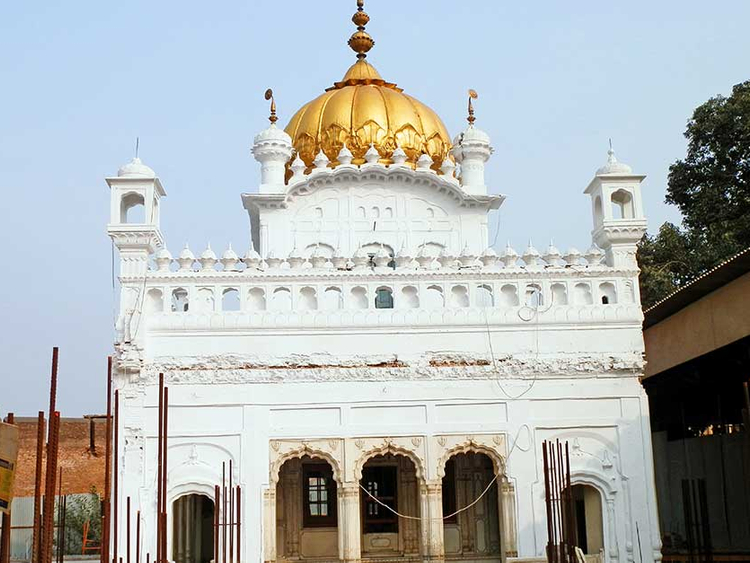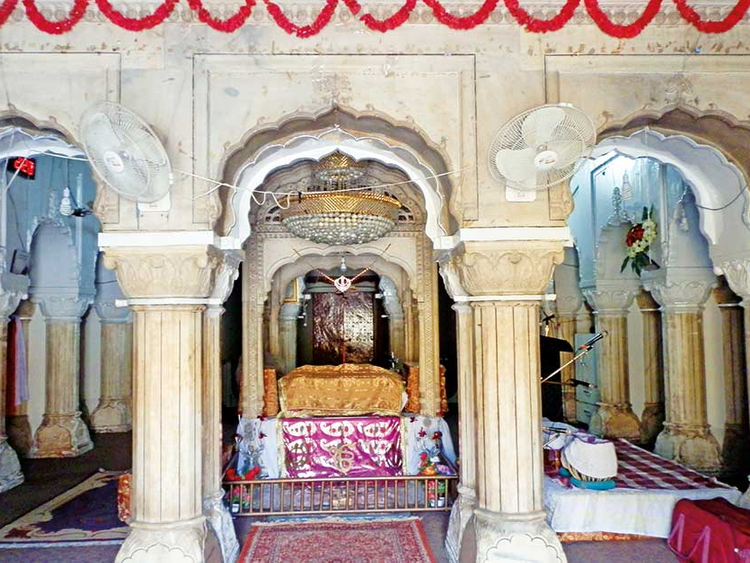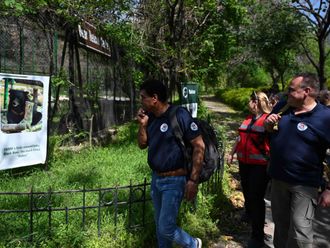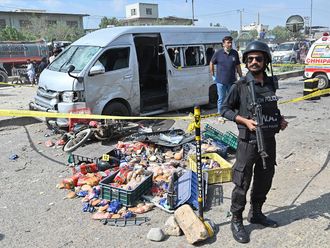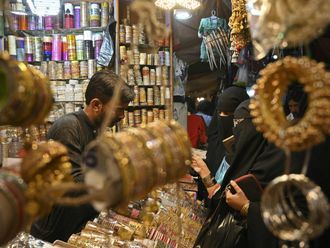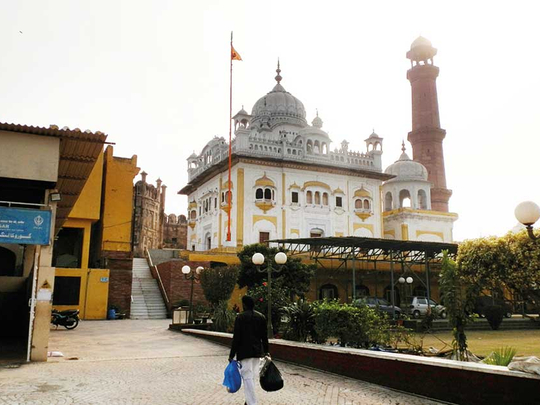
Lahore
There is something extraordinary about the place. It cannot be explained in words; it must be experienced.
Perhaps that’s because so much has happened at this place called Dera Sahib Gurdwara that when one enters the area, it is like going back in time. It is the place where the memorial for the fifth Sikh guru, Arjan Dev, was built by his son Guru Hargobind in 1619. Later, Maharaja Ranjit Singh built a Gurdwara at the site of the memorial, opposite the Lahore Fort, and near the Badshahi Mosque.
There are many gurdwaras in Lahore. One is on the Temple Road, two are in the complex of Dera Sahib. These three places of worship are frequented by the local Sikh community as well as pilgrims from other countries.
Each year, about 3,000-3,500 Sikhs come from India for various religious festivals and events to the complex. Hundreds of Sikhs come from upcountry areas such as Peshawar, too.
The beautiful Dera Sahib in Lahore, beside the Badshahi Mosque, is a symbol of religious tolerance. Prayers are offered in both places in the morning at the same time — a testimony to coexistence and religious harmony.
At Dera Sahib, the walls are beautifully designed and decorated with different stones and rich floral designs. The ceilings are decorated with glass mosaic work. The wood panels on the ceilings have stained glass showcases. The architectural designs are a blend of Mughal, Hindu and Sikh styles of architecture.
Foundations
Maharaja Singh, whose Sikh empire spread from now Indian Punjab, Haryana and Kashmir to Peshawar and southern Punjab on the borders of Sindh, built his capital in Lahore, from where he ruled for 39 years. He lived in Lahore Fort. His son, Kharak Singh, started the building of the Dera Sahib Gurdwara at the site he was cremated, near Guru Arjan Dev Gurdwara. But the structure was completed by his youngest son, Emperor Duleep Singh, in 1848 as Kharak Singh died in 1840, one year after ascending to the throne.
Maharaja Ranjit Singh’s ashes are contained in a marble urn in the shape of a lotus that is sheltered under a marble pavilion inlaid with pietra dura (mosaic artwork with precious and semi-precious stones). This is his samadhi (memorial where a person is cremated). There are also four urns, in which lie ashes of four queens who died by sati — a tradition of self immolation, undertaken by a wife when her husband died. Besides this, memorials for the maharaja’s sons and nephews are in rooms on either side of his memorial.
The complex of Dera Sahib also includes Guru Arjan Dev Gurdwara. That is the shrine of Guru Arjan, the fifth Guru of Sikhs and the first martyr, who built the Harmander Sahib, founded Tarn Taran Sahib city, compiled the text Adi Granth, founded Kartarpur and Jalandhar city, and wrote Sukhmani Sahib.
In June 1606, Mughal Emperor Jahangir ordered the guru tortured to death as his influence was spreading and he was thought to pose a threat to the empire. He was told by Jahangir to embrace Islam, but he refused. This was taken as an insult by the emperor who subsequently ordered his arrest.
Legend has it, after being tortured he was taken to River Ravi where he went into the water and never came up again.
The complex’s Langar khana (where free food is given to all) is near the Guru Arjan Gurdwara. A new langar khana is being built underground near the Gurdwara, as are new buildings. The Sikh community in Pakistan has welcomed the new developments, but the move is not without critics.
‘No excavation’
Kalyan Singh, who is a professor in Government College University, says there should have been no excavation.
“I understand that there is little space left for Sikhs when they come from all over the world to attend religious functions. But some other solution should have been found as all the buildings in the vicinity are very old and this may affect their foundations.”
Popular Punjabi singer Jassi Singh, however, is full of praise for the progress. “All the yatrees [pilgrims] are taken well care of and provided with all facilities. We appreciate the role of government in this regard,” he said.
Punjab Assembly member Ramesh Singh Arora said: “There is a lot conservation work done on the Sikh religious sites in last 20 years and in Pakistan Sikhs enjoy their right to practice their religion.”
Evacuee Trust Property Board Chairman Saddiqul Farouq said: “The Pakistan government is keen to conserve the existing architecture and to accommodate more pilgrims at Gurudawara Dera Sahib.”


